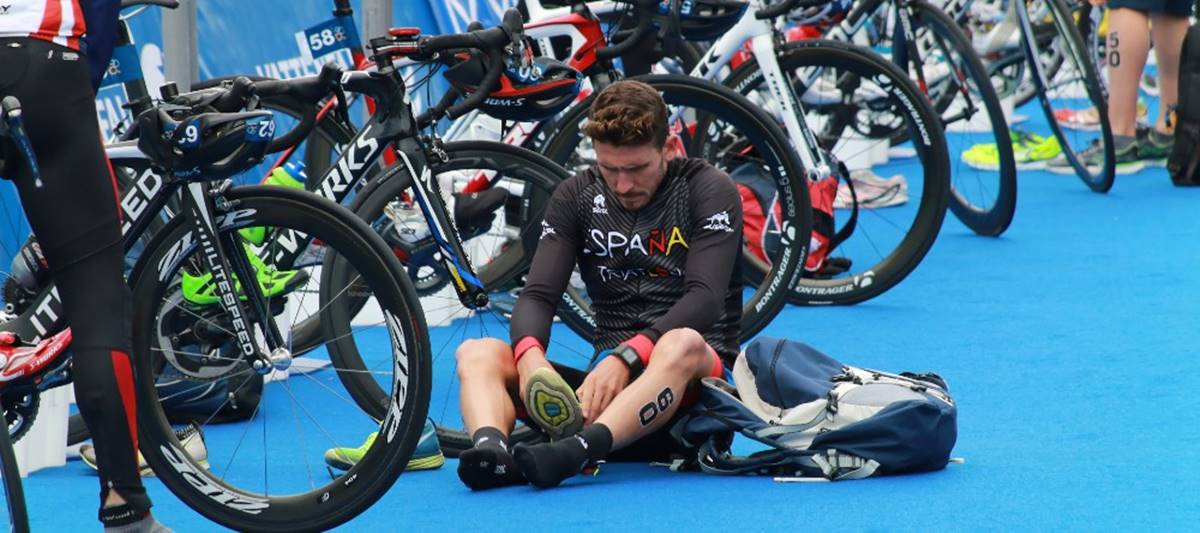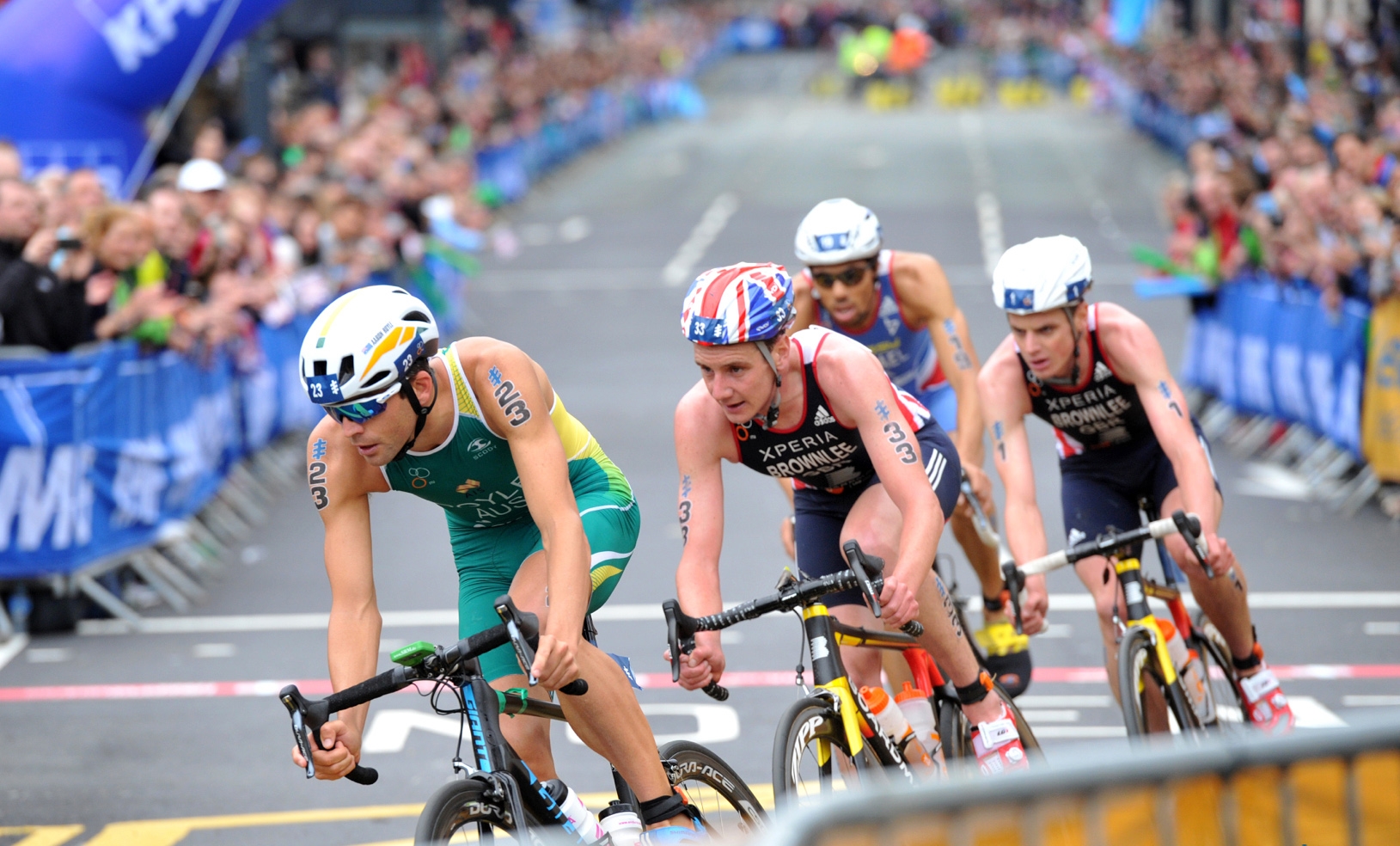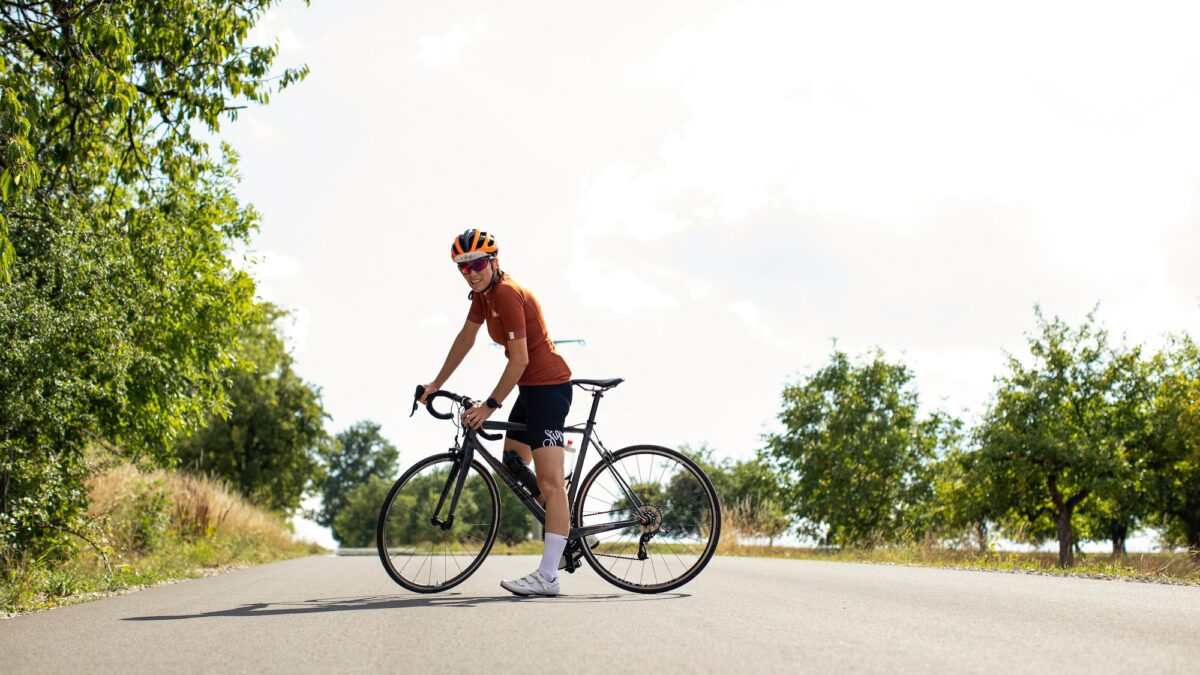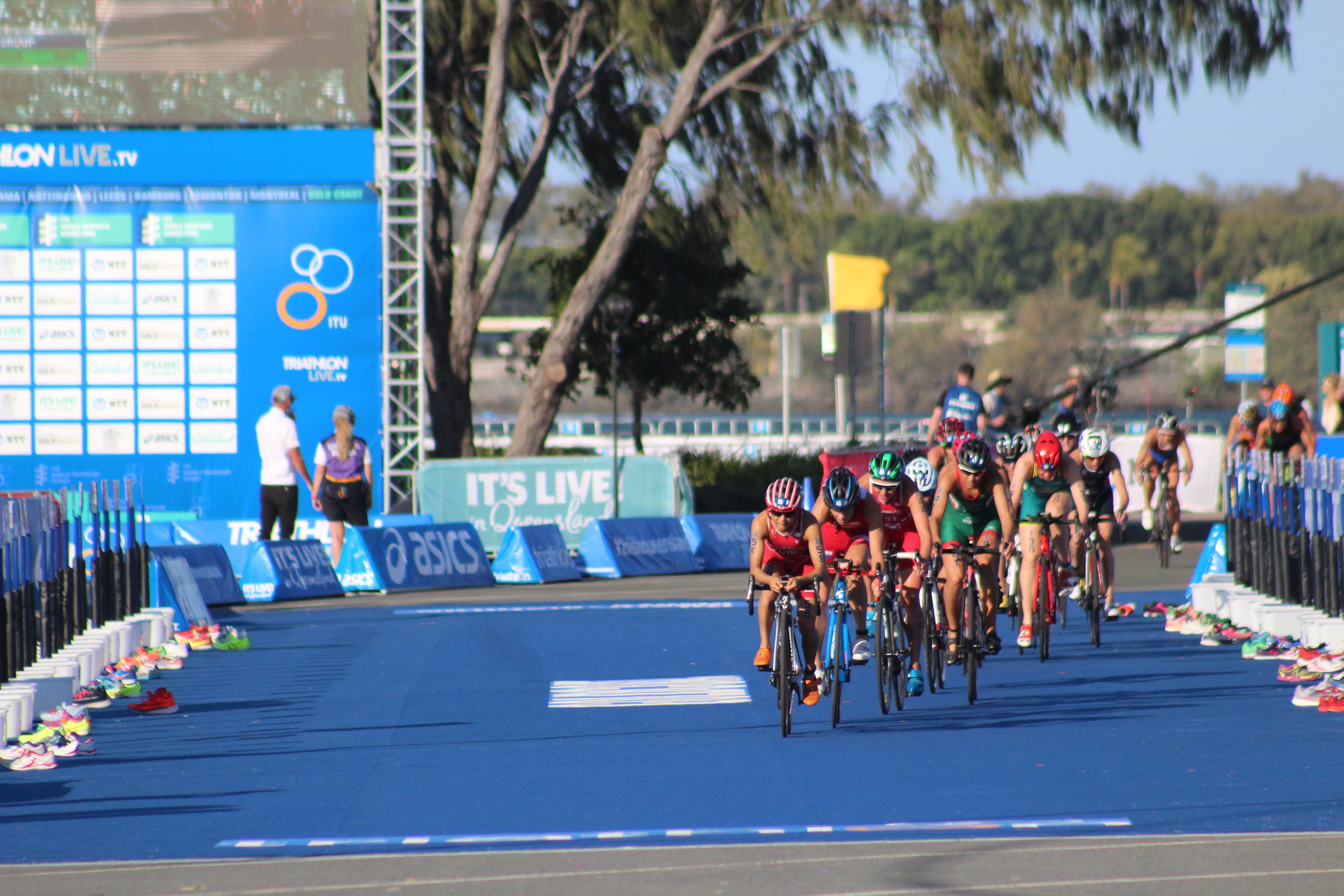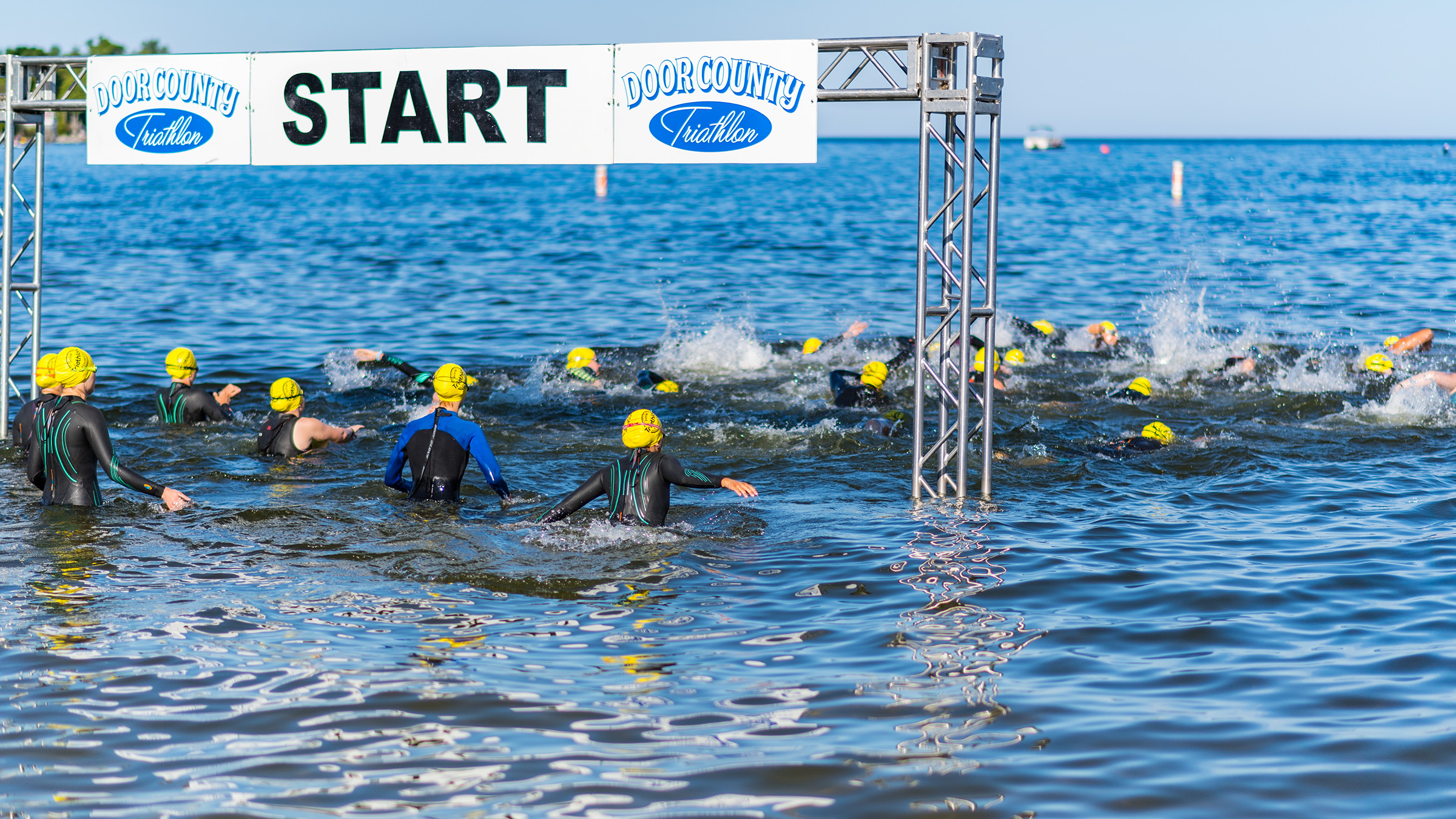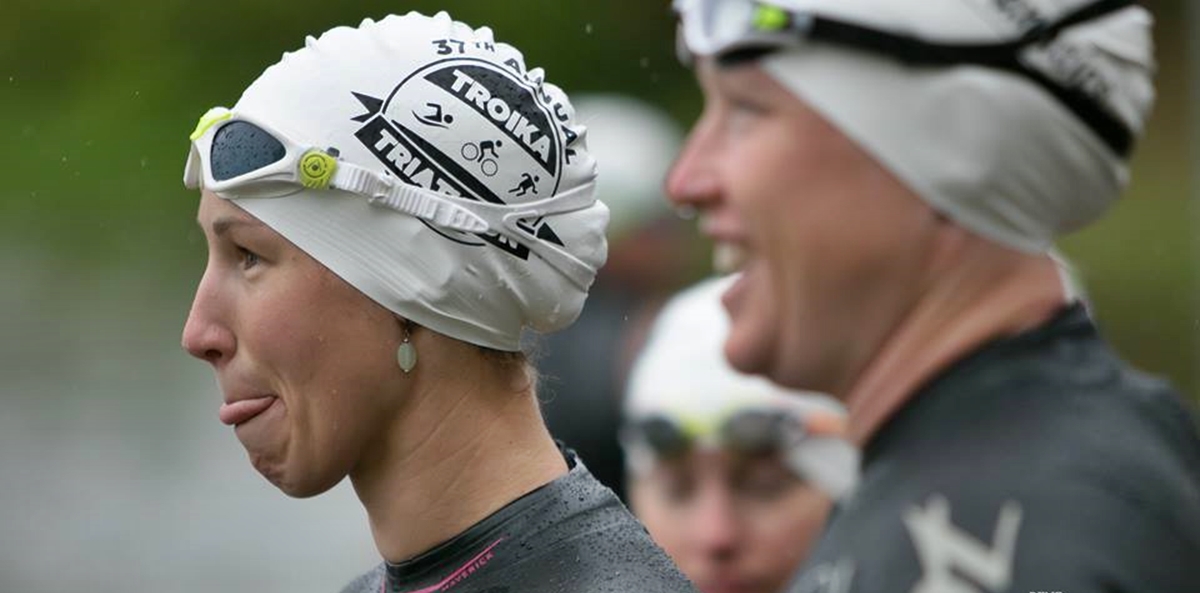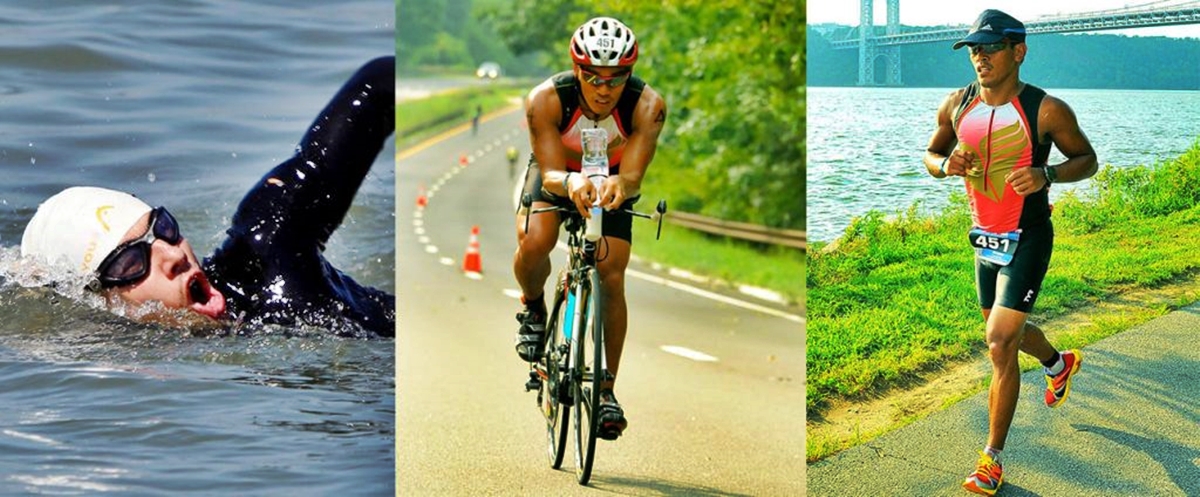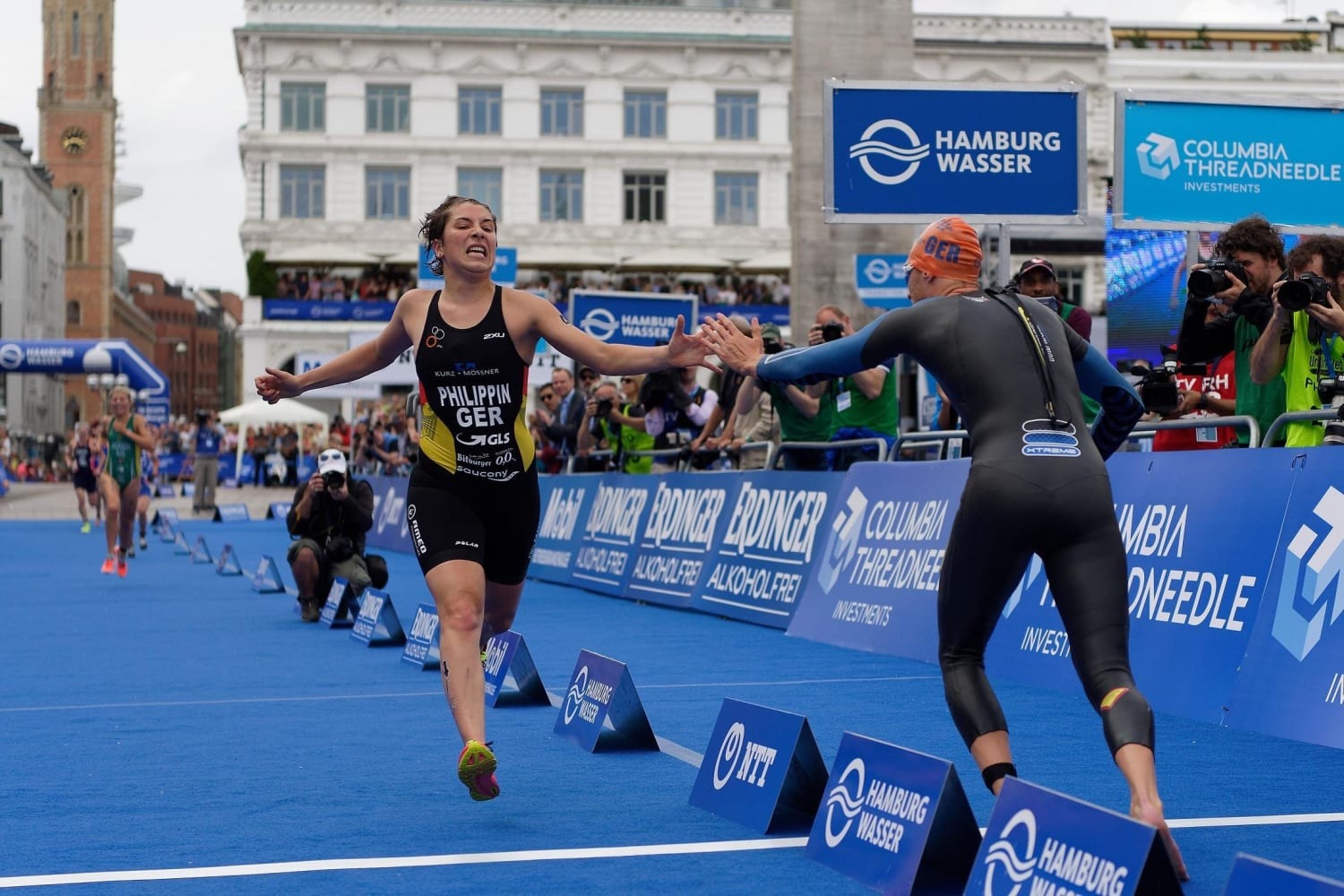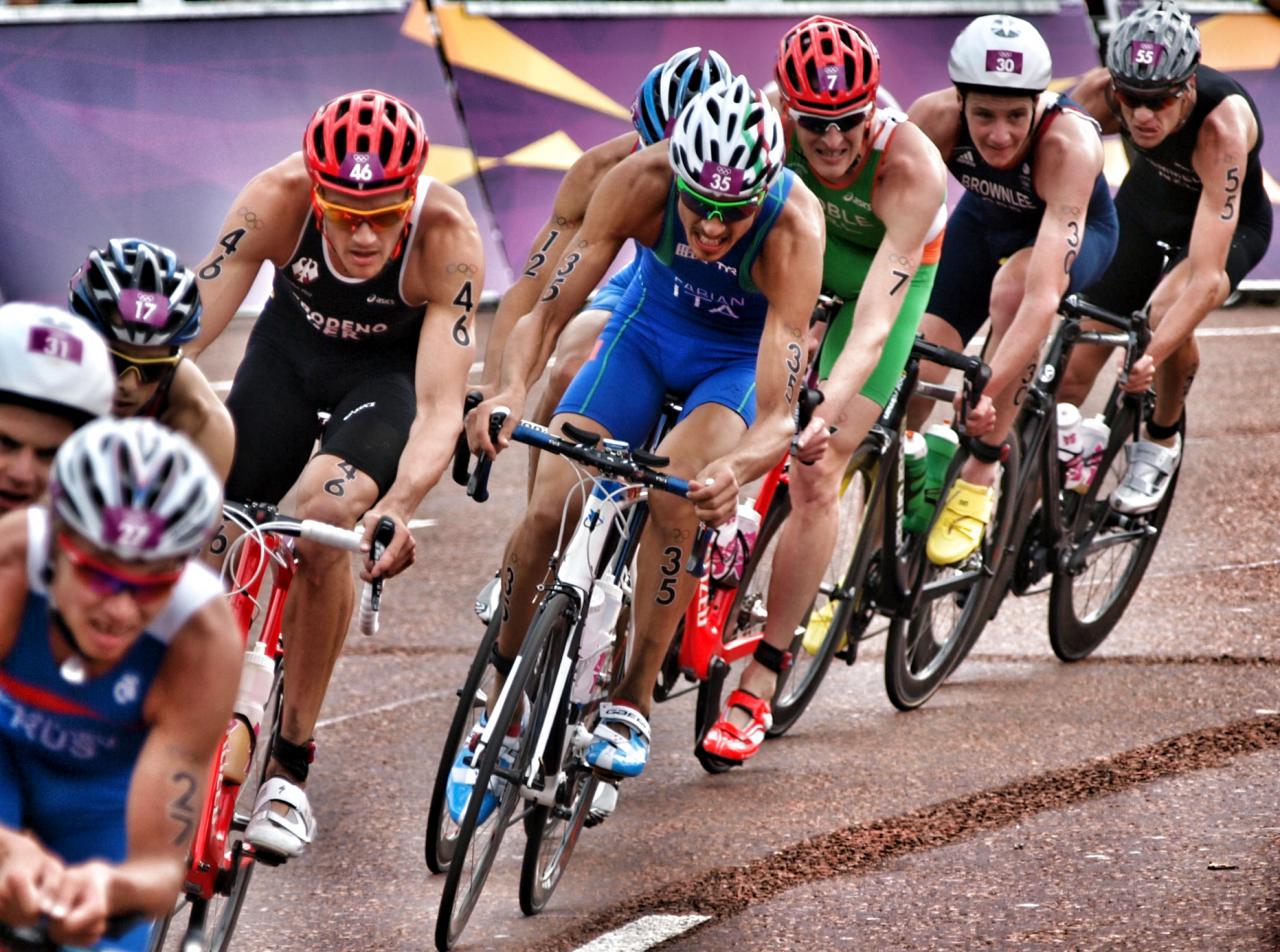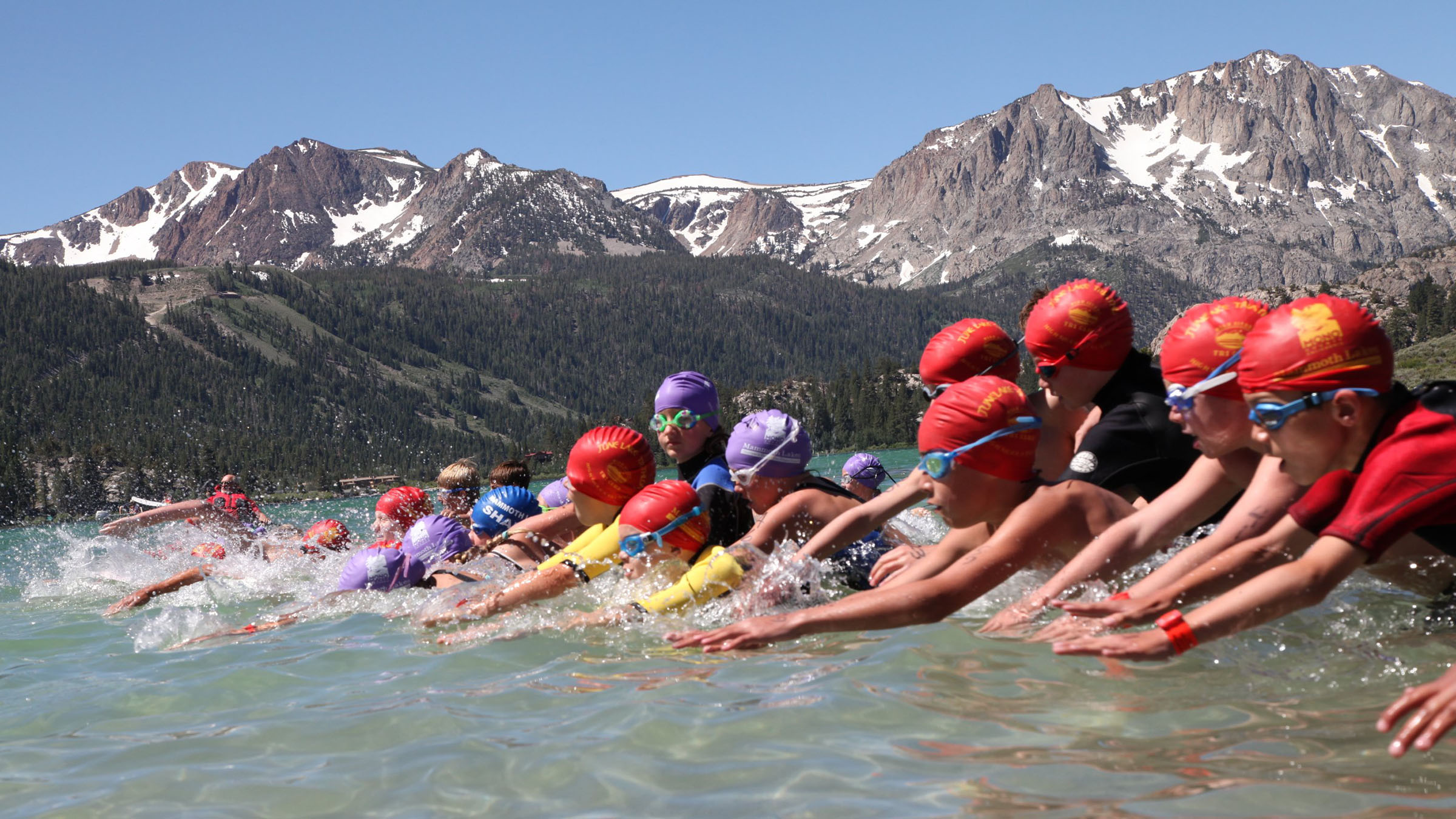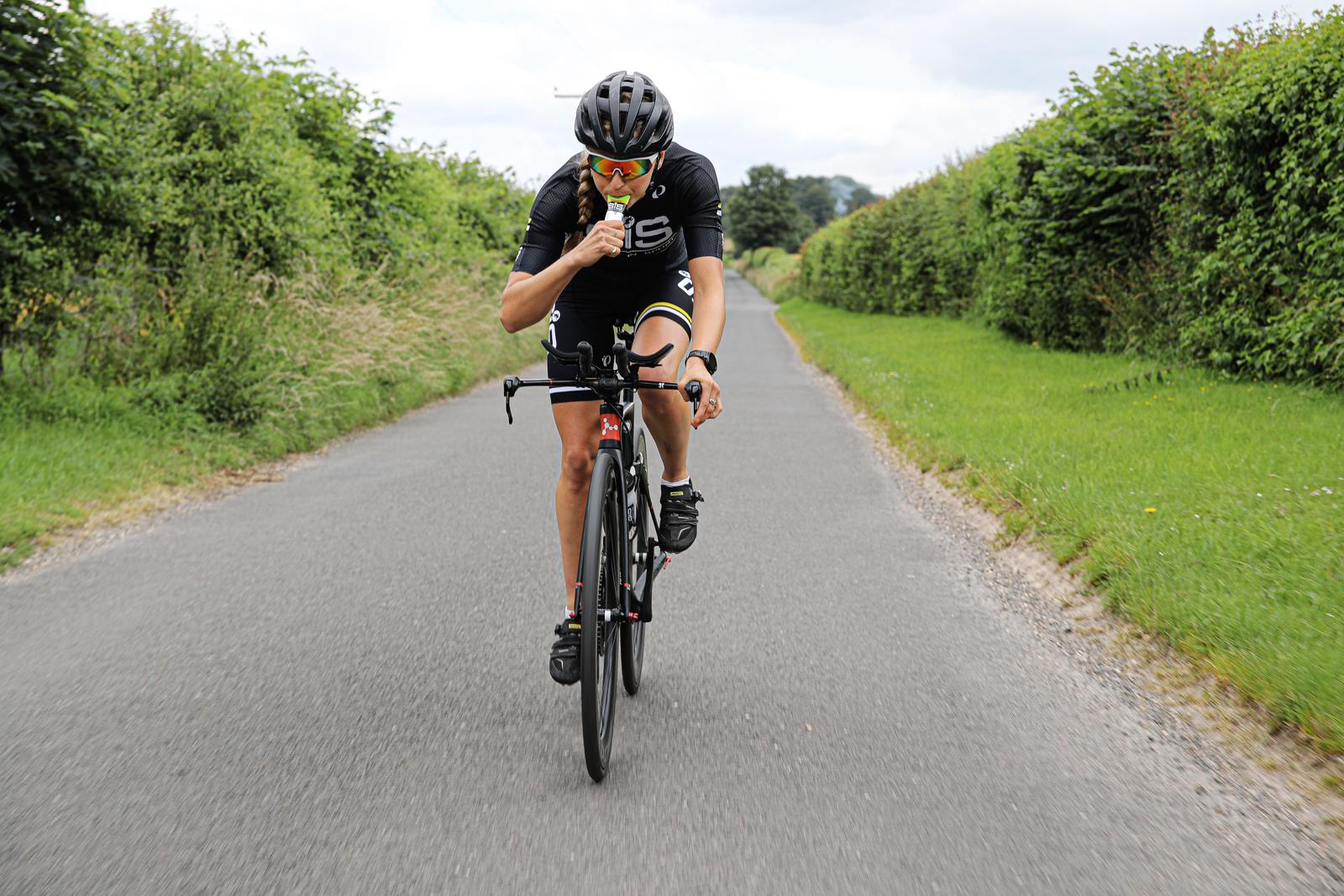

Featured
Where To Start First Triathlon
Modified: January 2, 2024
Discover the perfect guide to kickstart your first triathlon journey. Get insider tips on getting featured in this ultimate starting point for beginners.
Introduction
Welcome to the world of triathlons! If you’re ready to take on the challenge of your first triathlon, you’re in for an incredible experience. Triathlons are multidisciplinary events that combine swimming, cycling, and running, pushing your physical and mental endurance to the limit. Whether you’re an experienced athlete looking to diversify your training or a beginner seeking a new fitness goal, participating in a triathlon can be an incredibly rewarding journey.
Before diving into the world of triathlons, it’s essential to have a solid understanding of what you’re getting into. The combination of three different disciplines can seem quite daunting at first, but with the right preparation and mindset, anyone can successfully complete their first triathlon.
In this article, we’ll guide you through the process of preparing for your first triathlon, from choosing the right event to training effectively and ensuring you have the necessary gear. We’ll also provide tips and insights to help you navigate your way to a successful race day and cross that finish line with a sense of accomplishment you’ll never forget.
Whether you’re aiming to complete a sprint triathlon, an Olympic distance triathlon, or even an Ironman, the principles and strategies we’ll discuss can be applied to any level of competition. Triathlons attract participants of all ages and fitness levels, so don’t be discouraged if you’re new to one or more of the disciplines. With dedication, proper planning, and the right mindset, you’ll be well on your way to becoming a triathlete.
So, if you’re ready to embark on this incredible journey, let’s dive in and explore the steps you need to take to prepare yourself for your first triathlon!
Choosing the Right Triathlon
The first step in starting your triathlon journey is choosing the right event. With numerous triathlon options available, it’s essential to consider your experience level and personal preferences when selecting a race. Here are some factors to consider:
- Distance: Triathlons come in various distances, from sprint to Olympic to Ironman. As a beginner, it’s advisable to start with a shorter distance, such as a sprint triathlon, which typically consists of a 750-meter swim, a 20-kilometer bike ride, and a 5-kilometer run. Gradually, you can work your way up to longer distances as you gain more experience and confidence.
- Location: Choose a triathlon in a location that excites you. It could be near your hometown, a beautiful destination, or a place that offers favorable weather conditions. Consider factors such as travel distance, accommodation options, and the overall appeal of the location to make your triathlon experience enjoyable.
- Course: Each triathlon has its own unique course, including the swim, bike, and run routes. Some courses may be hilly, while others may be flat and fast. Evaluate your strengths and weaknesses in each discipline and choose a course that aligns with your abilities and preferences.
- Time of year: Consider the timing of the triathlon and how it aligns with your training schedule and availability. It’s important to allow yourself enough time to adequately prepare for the race without feeling rushed or overwhelmed.
Additionally, do some research to read reviews and gather insights from past participants. This can provide valuable information about the organization, safety measures, and overall experience of the event.
Ultimately, the goal is to choose a triathlon that aligns with your goals and motivations. Whether you’re seeking a competitive race or simply a personal challenge, selecting the right event will enhance your overall triathlon experience and set you up for success.
Setting Realistic Goals
Setting realistic goals is a crucial step in preparing for your first triathlon. By establishing clear and attainable objectives, you can stay focused, motivated, and track your progress throughout your training journey. Here are some guidelines to help you set realistic goals for your triathlon:
- Know your starting point: Assess your current fitness level in each discipline (swimming, cycling, and running) to understand where you stand. This will help you set realistic expectations and establish a baseline for your training.
- Consider your time commitment: Be honest with yourself about how much time you can dedicate to training each week. Triathlon training requires a significant time commitment, so it’s important to set goals that align with your schedule.
- Gradual progression: As a beginner, it’s important not to overwhelm yourself by setting lofty goals right from the start. Instead, focus on gradual progression and improvement. Set incremental goals that push your limits but are attainable with consistent training.
- SMART goals: Use the SMART (Specific, Measurable, Achievable, Relevant, Time-bound) framework to set effective goals. For example, instead of setting a vague goal like “get better at swimming,” set a specific goal like “improve my swimming technique and increase my distance by 100 meters within the next month.”
- A balance of performance and enjoyment: While it’s important to challenge yourself, don’t lose sight of the enjoyment and fulfillment that comes with participating in a triathlon. Set goals that allow you to perform your best while still enjoying the process.
Remember, everyone’s journey is unique, and it’s essential to set goals that are relevant to you. Avoid comparing yourself to others and focus on your own progress and achievements. By setting realistic and personalized goals, you’ll be able to stay motivated, track your improvement, and ultimately have a more fulfilling triathlon experience.
Training Schedule and Plan
Creating a well-structured training schedule and plan is essential for preparing for your first triathlon. A thoughtfully designed training program will help you build endurance, improve your fitness level, and ensure you’re adequately prepared for the race. Here are some key considerations when developing your training schedule:
- Frequency: Determine how many days per week you can commit to training. Aim for a minimum of three to four sessions per discipline to ensure balanced progress and avoid overtraining.
- Consistency: Consistency is key in triathlon training. Regular training sessions, even if they are shorter, are more effective than sporadic intense workouts. Find a schedule that works for you and stick to it as closely as possible.
- Variety: Incorporate a mix of swimming, cycling, and running workouts to develop strength and skill in each discipline. Include different types of workouts, such as endurance sessions, speed intervals, and recovery exercises, to challenge your body and avoid plateauing.
- Rest and recovery: Allow for regular rest days in your training schedule to give your body time to recover and avoid burnout. Plan for active recovery sessions, such as yoga or light cross-training, to maintain mobility and prevent injuries.
- Progression: Gradually increase the duration and intensity of your workouts over time. Aim for incremental improvements to prevent injuries and adapt your body to the demands of the triathlon.
- Seek guidance: If you’re new to triathlon training, consider working with a coach or joining a triathlon training group. They can provide expert guidance, personalized advice, and a support network that can significantly enhance your training experience.
Remember to listen to your body throughout your training journey. If you’re feeling excessively fatigued or experiencing any pain, it’s important to rest and seek appropriate medical advice if necessary. Taking care of your body and avoiding injury is as important as the training itself.
Lastly, flexibility is crucial in your training plan. Life happens, and unexpected events may disrupt your schedule. Don’t get discouraged and adapt your plan accordingly. The most important thing is to stay consistent and committed to your training, even if it means making slight adjustments along the way.
Essential Gear for Triathlon
Preparing for your first triathlon includes having the necessary gear to ensure a smooth and successful race. While the sport may seem equipment-heavy, you don’t need to break the bank or have the latest high-tech gadgets to get started. Here are the essential gear items you’ll need:
- Swim: A well-fitting swimsuit or triathlon-specific wetsuit is essential for the swim leg. Additionally, goggles will protect your eyes and improve visibility in the water.
- Bike: A road bike or a triathlon-specific bike is ideal for the cycling leg. Ensure your bike is in good working condition, including functioning brakes, tires with proper inflation, and a well-lubricated chain. Don’t forget a comfortable helmet to prioritize safety.
- Run: For the run leg, invest in a pair of well-fitting running shoes that provide adequate support and cushioning. It’s important to choose shoes that are specifically designed for running to prevent discomfort and potential injuries.
- Transition: Transition times play a crucial role in triathlon races. Use a transition bag or towel to organize your gear for quick and efficient transitions. Include items like socks, race belt, hat/visor, watch or timing device, and any nutrition you plan to consume during the race.
- Other gear: Consider additional items such as a wetsuit lubricant to aid in getting your wetsuit on and off smoothly, a bike pump for maintaining tire pressure, a water bottle or hydration pack for staying hydrated, and sunglasses to protect your eyes from the sun and reduce glare.
It’s important to note that as you progress in the sport, you may choose to invest in more specialized gear based on your individual preferences and goals. However, to get started, focus on the essentials and gradually build up your gear collection.
Don’t forget to practice using your gear during training sessions to familiarize yourself and ensure everything fits comfortably and functions properly. This will help eliminate any potential issues on race day and give you the confidence to focus on your performance.
Remember, while having the right gear is important, it’s ultimately your preparation, training, and determination that will make the biggest difference on race day. So, invest in your gear wisely, but always prioritize your training and mental readiness above all else.
Swim Training
The swim leg is often a challenging part for many triathlon beginners, but with proper training and technique, it can become one of your strengths. Here are some tips to help you improve your swim training:
- Get comfortable in the water: If you’re new to swimming, start by focusing on building your comfort and confidence in the water. Practice floating, submerging your face, and using rhythmic breathing techniques to become comfortable in the aquatic environment.
- Work on technique: Good technique is key to efficient swimming. Focus on proper body position, especially maintaining a horizontal alignment as much as possible. Practice smooth and controlled strokes, utilizing both your arms and legs in a coordinated manner.
- Train in open water: If your triathlon includes an open water swim, it’s essential to train in similar conditions. Find a local lake, ocean, or swimming pool with open water training sessions to practice sighting, navigation, and adapting to different water conditions.
- Incorporate drills: Incorporate swim drills into your training sessions to improve specific aspects of your stroke technique. Drills such as catch-up, single arm, and kickboard drills can help you build strength, improve body position, and develop better technique.
- Include interval training: To build endurance and speed, incorporate interval training into your swim workouts. Alternate between faster-paced intervals and recovery laps to push your limits and improve your overall swim fitness.
- Practice open water skills: If possible, practice open water skills such as sighting, drafting, and turning around buoys. These skills will be valuable during the race and can help you save energy and swim more efficiently.
- Seek guidance: Consider taking swimming lessons or working with a swim coach to improve your technique and receive personalized guidance. They can provide valuable feedback and help you make significant improvements in a shorter period of time.
Remember to gradually increase the distance and intensity of your swim training over time. Consistent practice and focus on technique will allow you to become a stronger and more confident swimmer for your triathlon.
Bike Training
The bike leg of a triathlon can be physically demanding, so it’s important to train effectively to improve your cycling skills and endurance. Here are some tips to enhance your bike training:
- Build a solid aerobic base: Start by developing your aerobic fitness through longer endurance rides. Gradually increase your mileage over time to improve your cardiovascular endurance and stamina on the bike.
- Include interval training: Incorporate interval training sessions into your bike workouts to improve speed and power. Intervals such as tempo rides, hill repeats, and threshold efforts can help you increase your cycling performance.
- Practice hill riding: If your triathlon includes hilly terrain, it’s crucial to train on hills. Incorporate hill repeats and long hill climbs into your training to build strength and improve your climbing abilities.
- Work on bike handling skills: Practice bike handling skills such as cornering, braking, and shifting gears. These skills are important for maneuvering through tight turns and technical sections during the race.
- Train in race conditions: If possible, train in conditions similar to those you’ll encounter on race day. Practicing in similar weather and terrain conditions will help you become familiar with any challenges that may arise during the race.
- Get a bike fit: Consider getting a professional bike fit to ensure your bike is properly adjusted to your body mechanics. A proper bike fit can help improve your comfort, power transfer, and overall performance on the bike.
- Practice transitions: Include transition practice in your training sessions. Practice smoothly transitioning from the swim to the bike and from the bike to the run to maximize your efficiency and minimize time lost during the transitions.
- Seek guidance: If you’re new to cycling or want to improve your skills, consider joining a local cycling group or hiring a coach. They can provide guidance on training techniques, bike handling skills, and help you progress as a cyclist.
Remember to prioritize safety during your bike training. Always wear a helmet, obey traffic laws, and be aware of your surroundings. It’s important to practice proper cycling etiquette and respect other road users.
Consistency, proper training, and focus on technique will contribute to your growth as a cyclist and improve your performance in the bike leg of your triathlon.
Run Training
The run leg of a triathlon can be physically demanding, especially after completing the swim and bike portions. To prepare for this final discipline, it’s important to focus on improving your running endurance, speed, and technique. Here are some tips to enhance your run training:
- Gradual mileage increase: Start by building a solid aerobic base through longer, steady-paced runs. Gradually increase your mileage over time to improve your endurance and prepare your body for the distance of your triathlon run.
- Incorporate interval training: Include interval training sessions to work on speed and improve your running fitness. Intervals such as tempo runs, speed repeats, and fartlek training can help you increase your running pace and build anaerobic endurance.
- Practice brick workouts: Incorporate brick workouts into your training routine, where you combine cycling or swimming with a run. Practicing the transition from bike to run helps your body adapt to the change and improves your running form under fatigue.
- Work on running form: Focus on maintaining proper running form, including an upright posture, relaxed shoulders, and a midfoot strike. Engage your core, swing your arms naturally, and maintain a steady cadence to maximize your running efficiency.
- Include hill training: If your triathlon includes hilly sections, it’s essential to train on inclines. Incorporate hill repeats and long hill climbs into your training to build leg strength, improve your running power, and boost your overall performance.
- Recovery runs: Schedule recovery runs as part of your training plan. These shorter, easy-paced runs help your body recover, reduce muscle soreness, and prevent overtraining.
- Listen to your body: Pay attention to any signs of injury or fatigue. If you experience pain or discomfort, take rest days or seek appropriate medical advice to prevent further damage. Adequate rest and recovery are essential for optimal performance.
- Practice pacing: Learn to pace yourself during your runs. Start with a comfortable pace and gradually increase your speed as you progress. A well-paced run will help you conserve energy and maintain a strong finish.
Remember to wear proper running shoes that provide the necessary support and cushioning for your feet. Invest in a good pair of socks to reduce friction and avoid blisters.
Consistency and a gradual increase in mileage and intensity are key to improving your running performance in a triathlon. With regular training and focus on technique, you’ll develop the necessary endurance and strength to conquer the run leg of your race.
Transition Practice
The transition area is where valuable time can be saved or lost during a triathlon. Efficiently transitioning between disciplines requires practice and familiarity with the transition process. Here are some tips to help you master the art of transitioning:
- Layout and organization: Familiarize yourself with the layout of the transition area before race day. Pay attention to where your bike rack is located, the entry and exit points, and the location of your gear. Organize your gear and set it up in a logical and efficient manner to minimize the time spent searching for items.
- Practice transitions: During your training sessions, incorporate transition practice. Simulate the transitions from the swim to the bike, and from the bike to the run. Time yourself and aim to gradually improve your transition times. Focus on smooth and swift movements while minimizing any unnecessary actions.
- Preparation: Mentally rehearse your transition routine. Visualize the steps you’ll take and anticipate any challenges you may encounter. This mental preparation will help you stay focused and confident during the actual race.
- Master the wetsuit removal: If you’re wearing a wetsuit for the swim, practice removing it quickly. Use lubricant to make the process smoother and practice rolling it down your body while running towards your transition area.
- Footwear strategy: Decide on your footwear strategy based on personal preference and the distance of your triathlon. Some athletes choose to wear their running shoes on the bike, while others opt to put them on in the transition area. Experiment during training to determine which strategy works best for you.
- Stay calm and focused: Transition areas can be hectic with many athletes rushing to change their gear. Stay calm, focused, and focused on your own race. Avoid unnecessary distractions and maintain a clear mind to execute your planned transition efficiently.
- Practice nutrition: If you plan to consume nutrition during the race, practice grabbing and consuming it quickly during your transition practice. Develop a method that allows you to fuel effectively without wasting precious time.
- Seek feedback: Ask a coach or experienced triathlete to evaluate your transition process. They can provide guidance, suggestions, and identify any areas for improvement. Feedback from others can help streamline your transitions and shave off valuable seconds.
Remember, mastering the art of transitioning takes time and practice. Use your training sessions to simulate the race scenario and refine your transition skills. The smoother and faster you become in the transition area, the more time you’ll save and the more focused you’ll be on your performance during the race.
Preparing for Race Day
Race day can be an exciting and nerve-wracking experience, but with proper preparation and organization, you can ensure a smooth and successful triathlon. Here are some essential tips to help you prepare for race day:
- Review the race information: Familiarize yourself with the race details, including the start time, race rules, and course map. Know the location of the swim start, the transition area, and the finish line. Understanding the race logistics will help reduce any last-minute surprises.
- Equipment check: Double-check all of your gear, making sure everything is in working order. Inflate your bike tires to the appropriate pressure, test your brakes, and ensure your race kit and shoes are in good condition. Prepare a checklist to make sure you have all the necessary gear for each leg of the race.
- Nutrition plan: Plan your nutrition strategy for race day. Determine what and when you’ll eat and drink before, during, and after the race. Practice your nutrition plan during your training sessions to ensure it works well for your body.
- Sleep and rest: Prioritize quality sleep in the nights leading up to race day. Rest and recovery are crucial for optimal performance. Avoid strenuous workouts and take your rest days seriously to restore your energy levels.
- Mental preparation: Visualize yourself crossing the finish line successfully. Mentally rehearse the race, visualizing each leg of the triathlon and how you’ll feel throughout the process. Focus on positive affirmations and believe in your training and abilities.
- Pack and organize: Pack your race-day bag the night before with all necessary gear, including your swim cap, goggles, timing chip, race number, bike shoes, running shoes, and any nutrition you plan to use. Lay out your race kit, making it easy to put on in the morning.
- Arrive early: On race day, arrive early to allow yourself time to set up your transition area, warm up, and mentally prepare for the race. Give yourself ample time to check-in, get your body marked, and become familiar with the race environment.
- Stick to your routine: Stay consistent with your pre-race routine. Eat the same types of foods that you’re accustomed to before your training sessions. Avoid trying new foods or experimenting with unfamiliar meals on race day to prevent any digestive issues or discomfort.
- Stay hydrated: Hydrate properly in the days leading up to the race and continue to drink fluids on race day. Monitor your hydration levels during the race and take advantage of aid stations to replenish your fluids as needed.
Remember, race day is the culmination of your hard work and training. Stay positive, trust in your preparation, and enjoy the experience. Embrace the excitement, embrace the challenges, and savor every moment of crossing that finish line.
Race Day Tips
Race day is finally here, and it’s time to put all your training and preparation into action. To ensure a successful and enjoyable triathlon experience, here are some essential tips for navigating race day:
- Arrive early: Give yourself plenty of time to arrive at the race site, park, and set up your transition area. Aim to arrive at least an hour before your wave start time to avoid rushing and reduce stress.
- Check-in and body marking: Complete the check-in process and get your body marked with your race number. Pay attention to any instructions or announcements regarding the race format, safety guidelines, and course updates.
- Warm-up: Prior to your swim start, warm up properly to activate your muscles and get your body ready for the effort ahead. Perform dynamic stretches, light jogging, and some swim-specific exercises to get your heart rate up and loosen your muscles.
- Stay positive and focused: Maintain a positive mindset throughout the race. Embrace any pre-race nerves as a sign that you’re ready and excited. Focus on your own race and avoid comparing yourself to others.
- Stick to your race plan: Trust your training and stick to the race plan you’ve prepared. Follow your pacing strategy, nutrition plan, and execute smooth transitions. Avoid the temptation to push too hard in the early stages and risk burning out later on.
- Stay hydrated and fuel appropriately: Regularly hydrate throughout the race, especially on longer distances. Take advantage of aid stations for water, electrolyte drinks, and fuel. Continue fueling according to your nutrition plan to maintain energy levels.
- Focus on technique: Maintain good form and technique in each discipline. Concentrate on your swim stroke, cycling cadence, and running form. Periodically check your body position, breathing, and align yourself with efficient movement patterns.
- Be aware of safety: Prioritize safety during the race. Follow any course rules and guidelines provided by the race organizers. Be aware of other participants and communicate clearly when passing or being passed. Always wear your helmet when cycling.
- Enjoy the experience: Triathlons showcase the incredible accomplishment of mind and body. Take time to appreciate the scenery, the support of volunteers and spectators, and the camaraderie among fellow athletes. Smile, enjoy the journey, and celebrate your achievements along the way.
Remember, race day is the culmination of your hard work and dedication. Embrace the challenges, stay positive, and keep focused on your goals. Trust in your training, listen to your body, and make the most of this incredible experience. Good luck and have a fantastic race!
Conclusion
Congratulations on embarking on your journey to participate in your first triathlon! It’s a challenging and rewarding endeavor that will push you to new limits. By following the steps outlined in this guide, you’ll be well-prepared to tackle the swim, bike, and run legs of the race with confidence and success.
Remember, choosing the right triathlon, setting realistic goals, and creating a well-structured training plan are key to your preparation. Focus on improving your swim technique, building cycling endurance, and refining your running form. Practice transitioning smoothly between disciplines, and ensure you have all the essential gear for race day.
As race day approaches, take the time to mentally prepare, visualize success, and develop a positive mindset. Arrive early, stick to your race plan, hydrate properly, and remain focused on your own performance throughout the event. Enjoy the experience, appreciate the support around you, and celebrate the incredible accomplishment of crossing the finish line.
Remember, every triathlete starts somewhere, and your first triathlon is just the beginning. Embrace the journey, learn from each race, and let it fuel your passion for the sport. Don’t be afraid to set new goals, challenge yourself, and continue to grow as a triathlete.
Enjoy the thrill of becoming a triathlete and relish in the incredible sense of achievement that comes with completing your first triathlon. This is the start of an exciting and fulfilling journey that will push you to new heights, both physically and mentally. Good luck, and have an amazing race!
